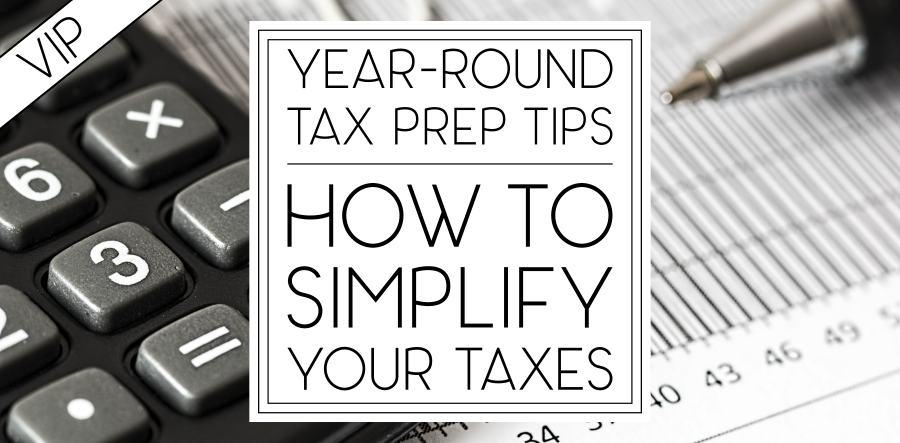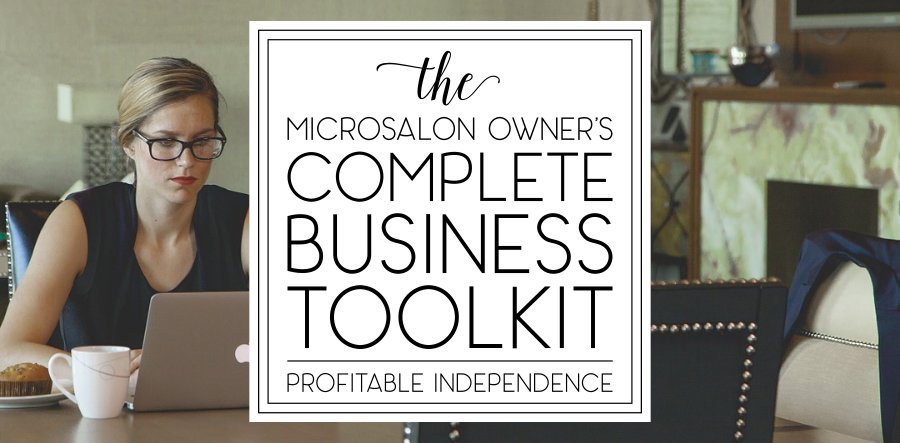Everyone is beholden to their tax obligations, no matter what line of work you’re in, but in our industry, taxes can be particularly tricky—especially if you have been misclassifying your employees or have been misclassified yourself.
If you want an efficient, stress-free tax season, you need a system that streamlines your recordkeeping throughout the year.
Salon professionals need to stay ahead of the game when it comes to handling their taxes. Here’s how to make it happen.
1. Use Bookkeeping Software That Syncs With a Mobile App
If you aren’t using bookkeeping software, what decade are you living in? Don’t get me wrong, I’m the kind of person who carries a physical planner and must hand-write things if I hope to remember them, but I refuse to go back to the days of keeping a manual ledger.
As careful as we are, we’re not perfect.
Working in our industry often involves a lot of cash changing hands, which doesn’t always have a paper trail. Around this time of year, I spend a lot of billable hours helping build that trail for salon owners and renters who stuff cash in their pockets throughout the day and fail to record their transactions. Every point-of-sale app facilitates cash tracking and nearly every single platform comes with mobile app synchronization, making recording sales of all types as easy as opening the app and tapping a few buttons.
If you’re not interested in an actual point-of-sale software, you can create a document on your phone and track transactions there throughout the day. I recommend saving this document to the cloud (Google Drive, OneDrive, Dropbox—take your pick) so it saves automatically and is accessible from multiple devices.
No matter which method you choose, your transactions will sync with the cloud. You can classify it as a business transaction, and with a log kept every day, your taxes will be easy once it is time to file.
2. Make Expense Tracking Part of Your Purchase Process
I’m not willing to stoop so low as to include gifs in my posts, but I’ll link them. This is me, talking to you right now. This is you, next tax season and every season that follows.
If you have time for Instagram, you have time to snap your damn receipts.
Create a folder on your preferred cloud-based storage system and call it “[YEAR] Receipts.” Whenever you spend money on a business expense, snap your receipt and save the picture to that folder.

While the cashier does their thing, I’m waiting with my phone, card, and receipt envelope in hand. I grab a quick pic of the receipt and toss it into the envelope. (I prefer to buy this pack of 12 and use one each month.) When I purchase something online, I immediately print, snap, and store the purchase order.
At the end of the month, print out your business bank statement and fold it like a letter. Slip the receipts inside. Write the total revenue on the left side of the folded statement and total expenses on the right side. Put that statement/receipt bundle into your receipt envelope and toss that envelope into the battered shoe box you’ve been using to store your collection of crumpled, faded receipts up until this point.
Every time you fail to deduct a business expense, you’re losing money. Stop that.
The better you keep track of everything that you spend, the better prepared you will be to handle the tax write-offs for your business.
3. Pay Your Estimated Taxes on Time and in Full
If you’re self-employed, pay your estimated taxes each quarter to avoid potential fees, penalties, and big tax bills.
Self-employment income isn’t subject to withholding. What does this mean? If you don’t withhold and remit taxes quarterly (breaking your annual tax due into a quarterly payment), you’ll likely end up with a really large annual tax bill come April.
You must pay at least 90% of your estimated annual taxes to avoid penalties and fees.
Sign up to use the EFTPS (Electronic Federal Tax Payment System) through the IRS. Paying quarterly is quick, easy, and free. Payments can be made immediately. If you like getting money back from the IRS or hate the idea of a large tax bill more than you hate the fact that the government will be earning interest from your overpayments, contribute more than you anticipate owing.
You can download The Salon Professional’s Guide to Quarterly Tax Payments here.
4. Encourage Digital Payments
Apps allow people to use credit and debit cards, PayPal, Apple Pay, Google Pay, Cash App, and other services. Give your customers as many ways to pay digitally as possible. These services link payments to your bank account, giving you cleaner transaction records.
businesses that don’t accept digital payment options will fall behind.

Just as cards replaced checks and cash, digital payment options are quickly rising in popularity, replacing cards. In the next ten years, people will increasingly use smart devices (phones, watches, etc.) to process transactions. This is a trend, not a fad. Get ahead of it.
Contrary to popular belief, business owners actually aren’t required by law to accept cash. If you want to fully automate your transaction tracking process, you can get real radical and stop accepting it altogether.
I quit taking cash years ago for a variety of reasons. Primarily, I consider the possession of cash a liability, and I really didn’t like the tedious process of tracking cash transactions.
5. Choose an Entrepreneur-Friendly Bank
Be selective about the banks you do business with and don’t be afraid to switch when a better opportunity presents itself. Every bank offers special programs and incentives to lure business owners. Take advantage of them.
If you don’t have one already, immediately open a business checking account.
I can’t express this clearly enough—nothing annoys me more than having to go line-by-line through a client’s monthly personal bank account statements to determine which transactions are business-related and which aren’t. I’m willing to bet you don’t want to endure that torture so do yourself (and/or your accountant) the massive favor of separating your business finances from your personal. This, combined with the envelope/snap system, will turn your tax filing into an hour-long data entry task instead of a nightmarish week-long hellscape.
6. Keep Informed of IRS Changes
The IRS makes changes to the law each year. Some will be inconsequential, while others will directly affect the type of business you do. The IRS has social media accounts on Twitter and Facebook, but they also have an email newsletter. The newsletter is written for tax professionals, but anyone can sign up and receive updates.
7. Rectify IRS Issues ASAP
Often, consulting clients tell me they’re scared to file taxes because they’ve failed to file for so many years and/or have a lot of unclaimed income. As much as I hate to be the bearer of bad news, filing your taxes isn’t optional and constitutes a big part of your responsibilities as both a citizen and business owner.
Each year you delay resolving outstanding IRS issues, the worse the consequences will get.
All is not lost if you run into tax trouble. Late filing penalties and payments aren’t ideal, but they are not the end of the world. The IRS works directly with taxpayers to create realistic payment plans.
If you’re hiding from the IRS, contact an Enrolled Agent to advocate on your behalf. They’ll represent you in your dealings with the IRS to help you get the best outcome.
8. Hire a Tax Pro to Assist You
If you’ve read this entire post and have determined that you aren’t a “tax person” or an “accounting person,” find someone who is.
People who struggle to keep records and stay organized should seek help from a tax professional immediately.
In addition to keeping your records in order, tax professionals can help you put together a tax strategy to minimize your tax responsibility and maximize your deductions. Let them handle the heavy lifting.
Whether you are a hairdresser, nail technician, massage therapist, or another sort of beauty professional, putting in a little bit of effort every day will result in a quick, simplified filing process. Stop putting off for (a long, miserable) April what can be done easily today.








